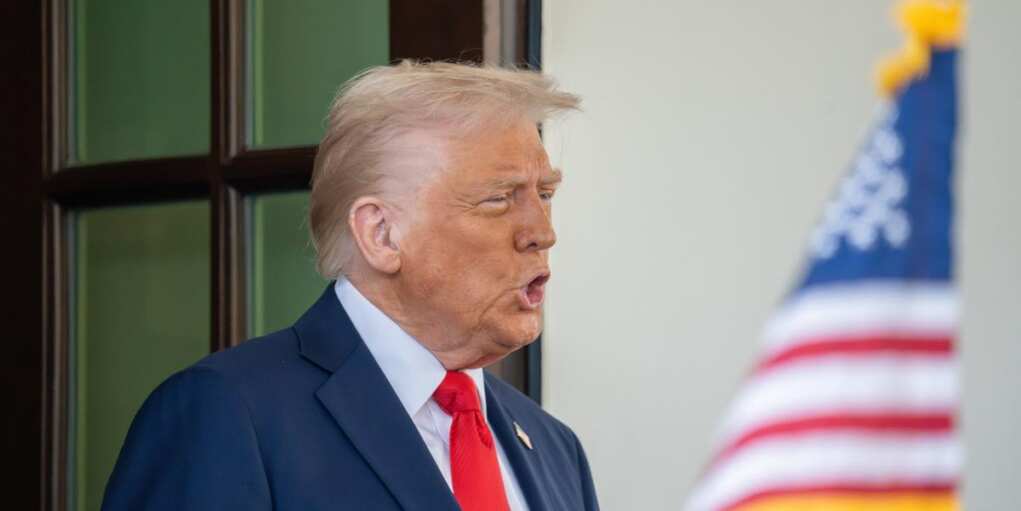Trump Breaks Silence on Ukraine, Reveals His Next Move

President Donald Trump confirmed this week that the United States will send additional weapons to Ukraine, explaining that the country is “getting hit very hard” and needs to be able to defend itself. The comments mark a notable shift after his administration recently paused certain arms shipments, citing low American stockpiles.
During a dinner with Israeli Prime Minister Benjamin Netanyahu, Trump was directly asked whether he planned to send more weapons to Ukraine. Without hesitation, he responded, “We’re going to send some more weapons. We have to; they have to be able to defend themselves. They’re getting hit very hard now. They’re getting hit very hard, we’re going to have to send more weapons — defensive weapons, primarily.”
These remarks come after the Trump administration announced earlier this month that it was pausing some weapons shipments, a decision confirmed by White House deputy press secretary Anna Kelly. She noted the Pentagon had reviewed American military stockpiles and found them to be lower than desired, prompting a temporary halt in transfers while officials assessed readiness.
Trump’s latest statement underscores the complex balancing act his administration faces: maintaining American defense readiness while responding to the realities on the ground in Ukraine, where heavy Russian bombardment continues to devastate key regions and civilian areas. The president emphasized that the aid would focus on defensive weaponry rather than aggressive systems, aligning with his approach to keep American involvement measured while supporting allies under attack.
Throughout his second term, Trump has pushed for negotiations to end the war, calling on Russia and Ukraine to reach a ceasefire that could bring stability to the region. Earlier this summer, Trump revealed that he had spoken directly with Russian President Vladimir Putin in an effort to encourage dialogue. While Trump described the conversation as “good,” he acknowledged that it would not “lead to immediate peace.”
On Monday, Trump expressed disappointment that Putin had continued the assault on Ukraine despite these discussions, stating during a rally in Iowa that he was “very disappointed with the conversation” and adding that he does not think Putin is “looking to stop” the conflict anytime soon.
The decision to resume weapons shipments highlights the administration’s efforts to deter further Russian aggression while reinforcing Ukraine’s ability to defend its sovereignty. It also signals to NATO allies that the United States is committed to supporting stability in Europe, even as it prioritizes rebuilding its own defense capabilities.
The debate over Ukraine aid has intensified within conservative circles, with some grassroots voters wary of prolonged involvement overseas. Trump, while maintaining his America First posture, has argued that preventing the collapse of Ukraine under Russian attacks serves American interests by deterring further destabilization in Europe and discouraging aggressors like China from making similar moves elsewhere.
Officials within the Trump administration have emphasized that each weapons shipment will be scrutinized to ensure it aligns with American readiness needs and does not undermine domestic security. Defense analysts note that the administration is focusing on sending air defense systems, drones, and precision-guided munitions, which can help Ukraine repel attacks without escalating the conflict into a broader regional war.
While Trump’s critics argue that sending more weapons risks prolonging the war, his supporters contend that a strong, defensive posture is essential to forcing Russia to the negotiating table. They view the shipments as part of a strategy to buy time for diplomatic channels to work while ensuring that Ukraine does not fall under Russian control.
As the war grinds on, the question of how much support the United States should provide remains at the center of policy debates in Washington. Trump’s decision to resume shipments signals a pragmatic acknowledgment that while his administration seeks peace, it cannot ignore the reality of Ukraine’s current battlefield situation.
Trump’s approach seeks to balance American interests, international stability, and the protection of taxpayer resources. The decision to send more weapons, while not universally popular, reflects the administration’s judgment that aiding Ukraine in defending itself is necessary under the current circumstances.
Whether this strategy will hasten peace or entrench the conflict further remains to be seen, but for now, Trump has made clear that the United States will not stand by while Ukraine is “getting hit very hard.”

